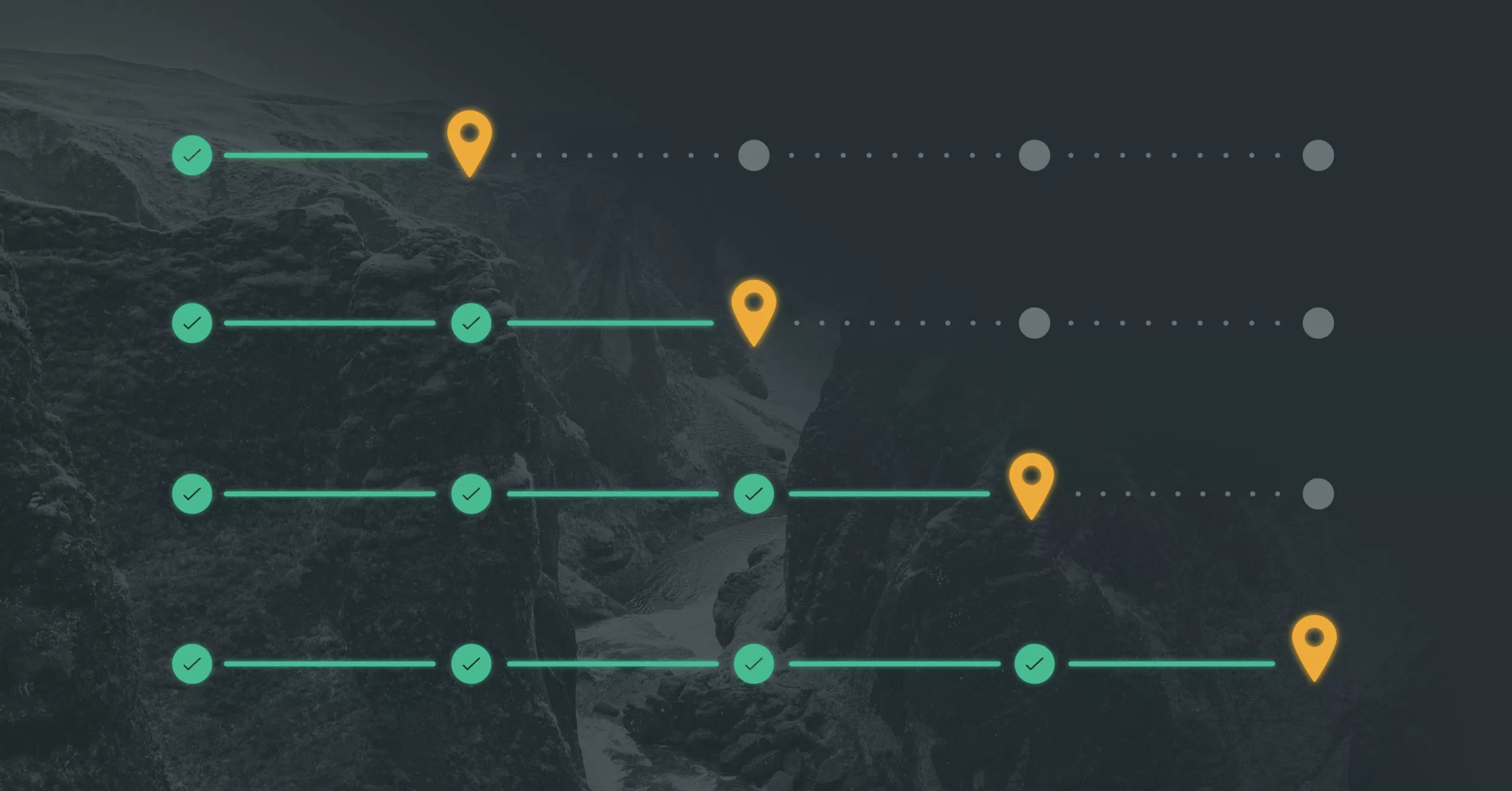Agile Metrics: How to Track Progress During Agile Transformation
An Agile Transformation requires us to use a particular set of Agile metrics to measure progress. But before we can begin measuring, the first thing we need to understand is our goals for the Transformation. What do we want out of Agility? Once we have that answer, we use those goals to measure and ensure the leading and lagging indicators we selected are all rolling up to that goal.
Getting everyone working together is a process that can be planned and executed with clearly defined goals and measurable outcomes. In this blog we will uncover the ways we can measure our progress toward our Transformation goals at both the team level and delivery organization level.
Expeditions and Basecamps
Groups of teams, operating in a reliable and predictable manner, quantifiably demonstrate progress against defined business goals. This is the goal of the Transformation effort.
Small groups of encapsulated teams that we call Expeditions, moving to a Basecamp, an intermediate goal along the way, are the primary unit of measure in an Agile Transformation.
The Basecamp is an intermediate step along the way that allows you to measure progress, claim an intermediate victory, and possibly rest and refuel for the next leg of your Transformation.
Measuring Progress Across Teams
There are three major categories of progress that must be measured across all teams during an Agile Transformation to determine if it’s progressing according to plan: Activities, Outcomes, and Basecamps.
Activities
Activities are the smallest unit of progress in an Agile Transformation. They’re the equivalent to activities on a sprint plan, necessary to deliver the work in the user story, but not sufficient on their own to deliver value. Activities should be tracked and can serve as a leading indicator to the progress we’re making on outcomes.Activities are leading indicators of outcomes.
Outcomes
Outcomes give us assurance that we’re tracking to our intermediate goals. Activities roll up into outcomes, but the outcome is the smallest unit of measurable progress on an Agile Transformation. Outcomes should reflect significant progress for a team, or set of teams. They should be measurable in the eyes of the business.
Outcomes are leading indicators of achieving a particular Basecamp.
Basecamps
Basecamps are the highest level of value short of business outcomes for the Transformation. Once an Expedition moves to a Basecamp, its performance attributes should be extremely clear, measurable, and economically justifiable against the spend necessary to get it there
Basecamps are leading indicators of better business outcomes.
The organization needs to move in smaller, more quantifiable steps. Basecamps allow you to break your Transformation into smaller funding increments with measurable and defined intermediate goals.
Measuring Delivery Organization Progress
Metrics are the way in which we measure the progress of the delivery organization. Agile metrics should exist at all levels of the governance model but become particularly relevant to the business as you move higher in the stack from team-level metrics into program and portfolio-level metrics.
But how do we measure the right things that are meaningful?
We want to use metrics as a way to help teams get better over time—solid metrics that actually drive the right kinds of outcomes and give the leadership driving the Transformation the tools and visibility they need to make the necessary changes to the system and actually improve overall performance.
When we already understand our goals, we use those goals to measure and ensure the leading and lagging indicators we selected are all rolling up to those goals.
The Most Important Agile Metrics
There are two types of metrics that are most important to Transformation. Some fall into the category of leading indicators that we can measure now, and they offer a clue on whether we’ll achieve the goals before us in the Transformation—we call those Transformation metrics. And the lagging indicators are the things we find out later in the process— we call those performance metrics.
Agile Transformation Metrics
This involves measuring how people in the organization are progressing toward their Transformation goals. Are they learning the things that need to be learned, doing the things that need to be done, and achieving the progress they need to achieve?
Agile Performance Metrics
These are about actual business results. Are we able to deliver product into the market more predictably? Are we able to deliver with higher quality? Have we been able to reduce costs, etc.?
Here’s a quick overview of steps that can lead us to the right metrics:
- Create hypotheses around the organizational characteristics that we think are going to create and the leading and lagging indicators that line up to those characteristics.
- Run experiments to put those constructs into the organization.
- Measure their performance to demonstrate that the changes that we made are delivering the performance characteristics that we want, or not.
- If the changes we made are not working, we need to identify the things in our system that have to be changed to improve performance and figure out what we want to do to optimize the system so that we find the metrics we want to measure.
The result is that we understand the relationship between the metrics and the organizational characteristics that are going to lead to the performance we’re looking for.
Agile is the Goal
Agile is really a means to an end. Because what we actually want is Business Agility. We want predictability, quality, earlier return on investment, product fit, innovation, and cost savings.
But if we measure our progress the right way and use the right metrics to improve our system and measure progress along the way, then we all win. Everybody gets to work in a great environment, the leaders get the levers that they need to be able to help the organization improve, and everything comes into balance.


